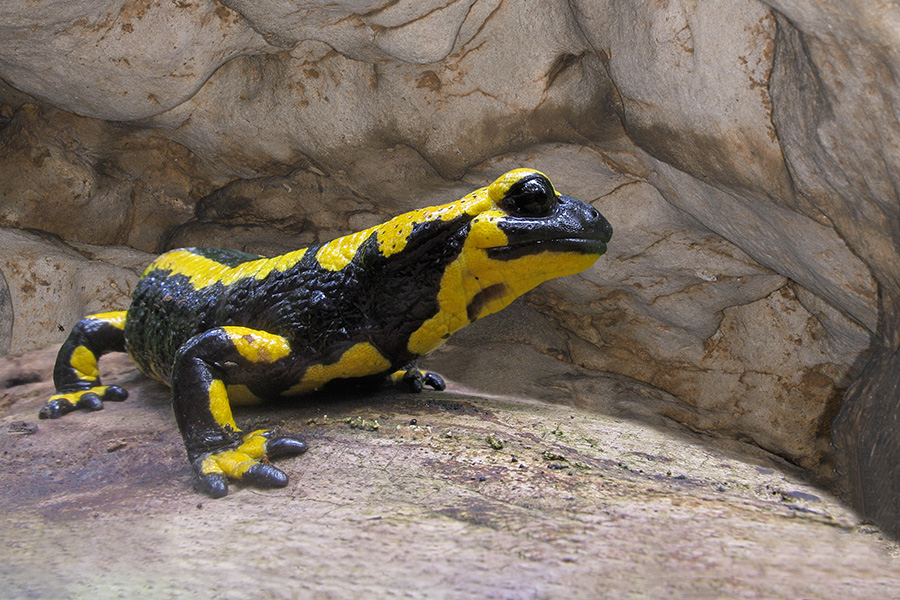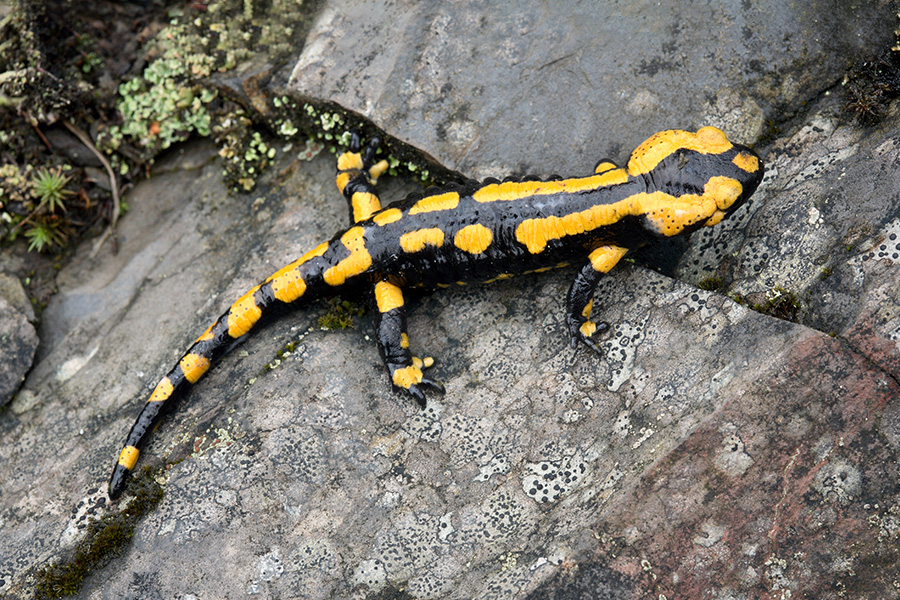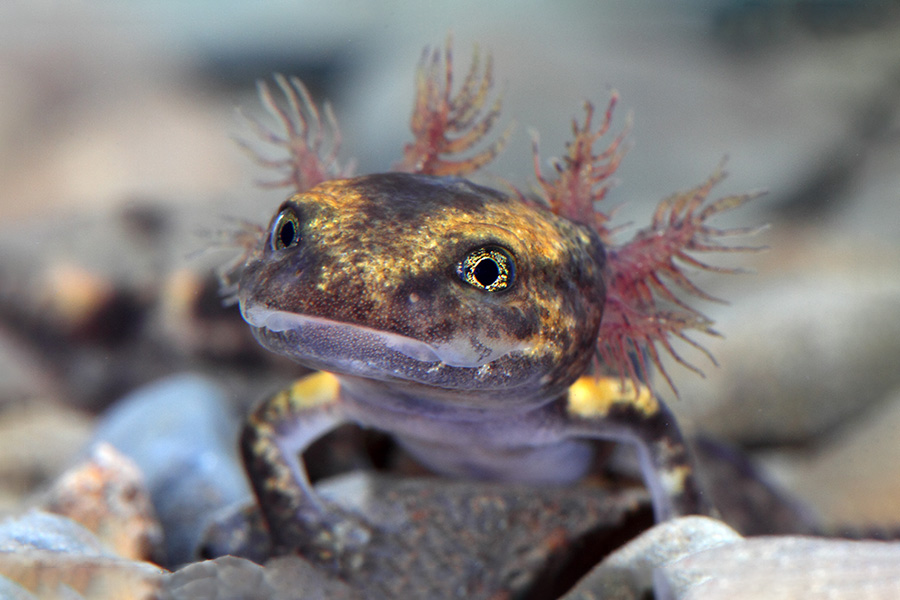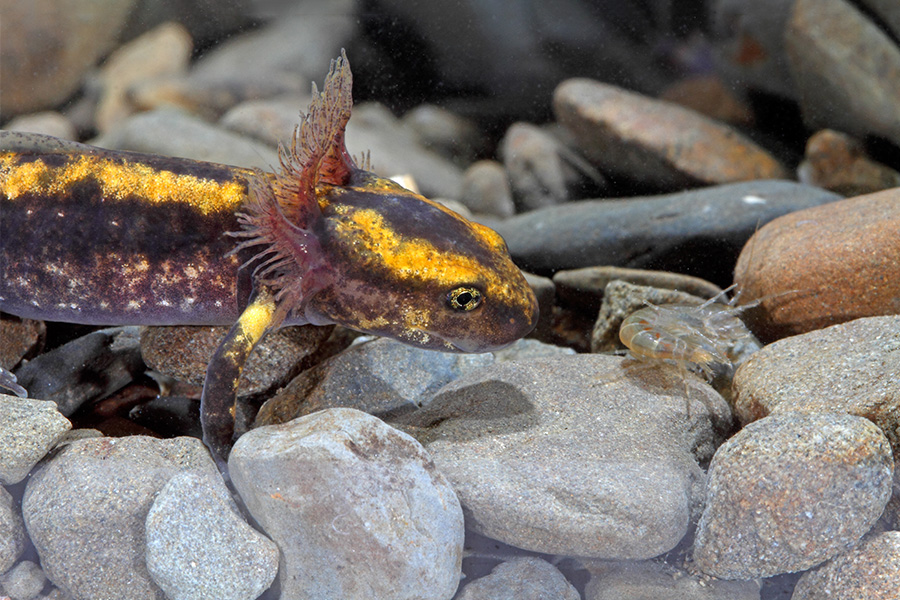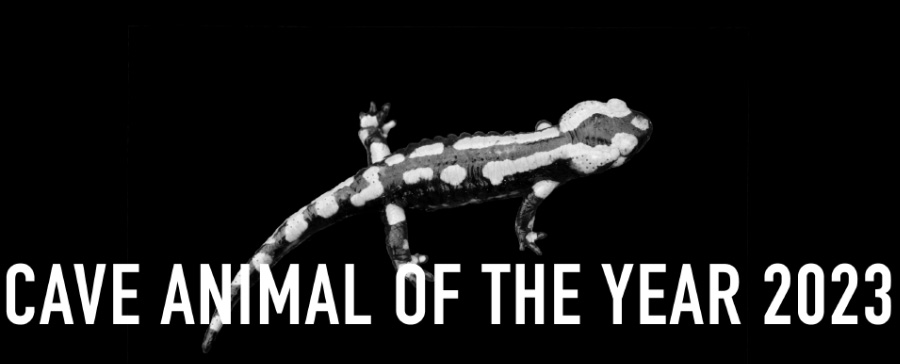
Fire Salamander - Cave Animal of the Year 2023
Introduction
The fire salamander (Salamandra salamandra) was first described scientifically by Carl Linné (Linnaeus) in 1758. About 13 subspecies are known. In Germany, two subspecies occur, the striped fire salamander (Salamandra salamandra terrestris) and the spotted fire salamander (Salamandra salamandra salamandra). Fire salamanders prefer damp places, which protect them from drying out. They are often found in caves, where they benefit from the generally high humidity.
In Central Europe, entire salamander populations have been wiped out by the skin fungus Batrachochytrium salamandrivorans (Bsal for short). The fungus came most likely from East Asia and has been spreading through Europa since 2013. This aggressive skin fungus can only be contained by preventing it from spreading any further. As far as caves are concerned, this should be done by thoroughly cleaning any equipment and clothing used, and should also be practised consequently.
The fire salamander is found in caves, mine tunnels and other underground cavities during the whole year. The fire salamander was chosen as the "Cave Animal of the Year 2023" because the species is easily recognisable even by the layman, but also because of the current endangerment. The species stands for a large number of animal species that depend on sheltered underground retreats.
With the choice of the Cave Animal of the Year, the German Speleological Society wants to point out the immense deficiencies in the research of subterranean ecosystems and their associated faunas.
Description
Fire salamander grow up to 20 cm in length. Their colours are usually black and yellow, the pattern is unique to each individual animal. They feed on arthropods, earthworms and land snails. Female fire salamanders produce up to 60 living young. The gill-bearing larvae are released in shallow water. Adult fire salamanders are found in natural caves as well as in mine tunnels. Usually, the animals enter caves through crevices or the entrances. A special case are pits, into which the salamanders drop accidentally and which they cannot leave on their own. At the bottom of these pits is usually a rich food supply of invertebrates that have dropped in as well, therefore adult salamanders can survive several years under relatively constant environmental conditions. Larvae can be observed in cave waters all year round. Under the specific climatic conditions of the cave environment, metamorphosis is possible throughout the year. The numerous findings between November and March show that larvae are often hibernating in subterranean waters.
Distribution
The fire salamander has the largest distribution area of all European land salamanders. The northern limit of its distribution runs through northern Germany. The eastern limit runs east of the Elbe River through southern Poland to Romania. Outside of Europe, the fire salamander is found in Morocco, Algeria, Israel, Syria, Turkey and Iran.
